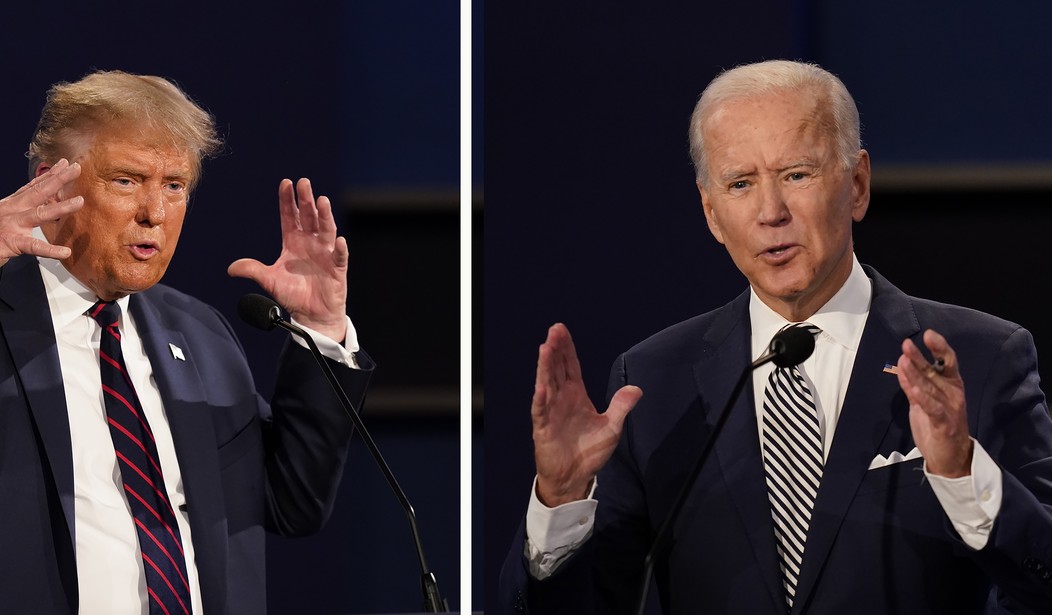The Republican Party nominated its first presidential candidate in 1856, putting up John C. Fremont against Democrat James Buchanan, who had been a senator from Pennsylvania.
Fremont lost Pennsylvania to Buchanan and lost the election.
Four years later, the Republicans nominated Abraham Lincoln, who ran in a divided nation against a divided Democratic Party and won Pennsylvania -- and also the presidency.
Lincoln won Pennsylvania again in 1864, and Ulysses S. Grant won it in 1868 and 1872.
A pattern had been established: Since the Civil War, only two Republicans have been elected president while losing Pennsylvania. The first was Richard M. Nixon, who lost the state in 1968 while defeating Democratic Vice President Hubert Humphrey for the presidency.
But four years later, Nixon came back and won Pennsylvania when he swept 49 of the 50 states to win reelection.
George W. Bush then managed to lose Pennsylvania twice while winning the presidency twice -- losing it first to Vice President Al Gore in 2000 and then to Sen. John Kerry in 2004.
Yet George W. Bush's presidential victories pointed to an even more pronounced pattern than the sustained significance of Pennsylvania for Republican candidates: Bush won Ohio in both 2000 and 2004.
Had he lost Ohio, he would have lost both elections.
In 2000, Ohio carried 21 Electoral College votes. Bush defeated Gore in the Electoral College by 271 to 266. Had Ohio gone for Gore, Gore would have won 287 to 250. In 2004, Bush defeated Kerry in the Electoral College 286 to 251. In that election, Ohio had 20 votes in the Electoral College. Had the state gone for Kerry that year, Kerry would have squeaked out a 271 to 266 victory over Bush.
Recommended
There have been Republican presidential candidates who won Ohio while losing the election. Fremont did it in 1856. So did James G. Blaine in 1884; Benjamin Harrison (who took 22 of the state's 23 Electoral College votes) in 1892; Thomas Dewey in 1944; and Richard Nixon in 1960.
But no Republican has ever been elected president without winning Ohio.
All 17 Republican nominees -- from Abraham Lincoln onward -- who have won presidential elections have won Ohio.
Similarly, only two of 17 Republicans who have won presidential elections did so while losing Michigan. In 1968, Nixon won the election while losing Michigan; and George W. Bush did it in both 2000 and 2004.
Herbert Hoover was elected president in 1928 when he won Michigan. But four years later, in the midst of the Great Depression, he lost both Michigan and the presidency to Franklin Delano Roosevelt.
Only three Republicans have been elected president while losing Wisconsin. Calvin Coolidge lost it in 1924 to Sen. Robert La Follette, a third-party candidate who was from Wisconsin. George H.W. Bush lost it in 1988 to Gov. Michael Dukakis of Massachusetts; and George W. Bush lost it in 2000 and 2004 to Gore and Kerry.
William Howard Taft won Wisconsin in 1908 when he defeated Democratic nominee William Jennings Bryan for the presidency. But then Taft lost Wisconsin in 1912 to Democratic New Jersey Gov. Woodrow Wilson when former President Teddy Roosevelt ran as a third-party candidate.
Hoover followed Taft's example, taking Wisconsin in 1928 when he defeated Democratic New York Gov. Al Smith for the presidency, but then losing it in 1932 when lost to Democratic New York Gov. Franklin D. Roosevelt.
The Bush family holds this distinction: Every Republican nominee who won a presidential election from Lincoln through Reagan did so while winning Iowa. Then George H.W. Bush lost Iowa in 1988 and still managed to win the election. But, in 1992, Bush lost Iowa again while losing the presidency.
Eight years later, George W. Bush emulated his father by losing Iowa while winning the presidency. But, in 2004, the younger Bush broke with his father: He won Iowa and won reelection.
In 2016, Hillary Clinton won the popular vote over Donald Trump by 48.2% to 46.1% -- with a margin of more than 2.8 million votes.
But, as reported by the Federal Election Commission, Trump defeated Clinton in the Electoral College 304 to 227.
That is because he won Pennsylvania (20 Electoral College votes), Ohio (18), Michigan (16), Wisconsin (10), and Iowa (6) -- a sweep no Republican presidential candidate had accomplished since Ronald Reagan.
With the combined 70 electoral votes from those five states, he could have lost Florida (and its 29 electoral votes) and still won the Electoral College 275 to 256.
The outcome of next week's election will not be determined by massive popular vote margins in California and New York.
But it may be determined by voters in Pennsylvania, Ohio, Michigan, Wisconsin, and Iowa.
Terence P. Jeffrey is the editor in chief of CNSnews.com.























Join the conversation as a VIP Member